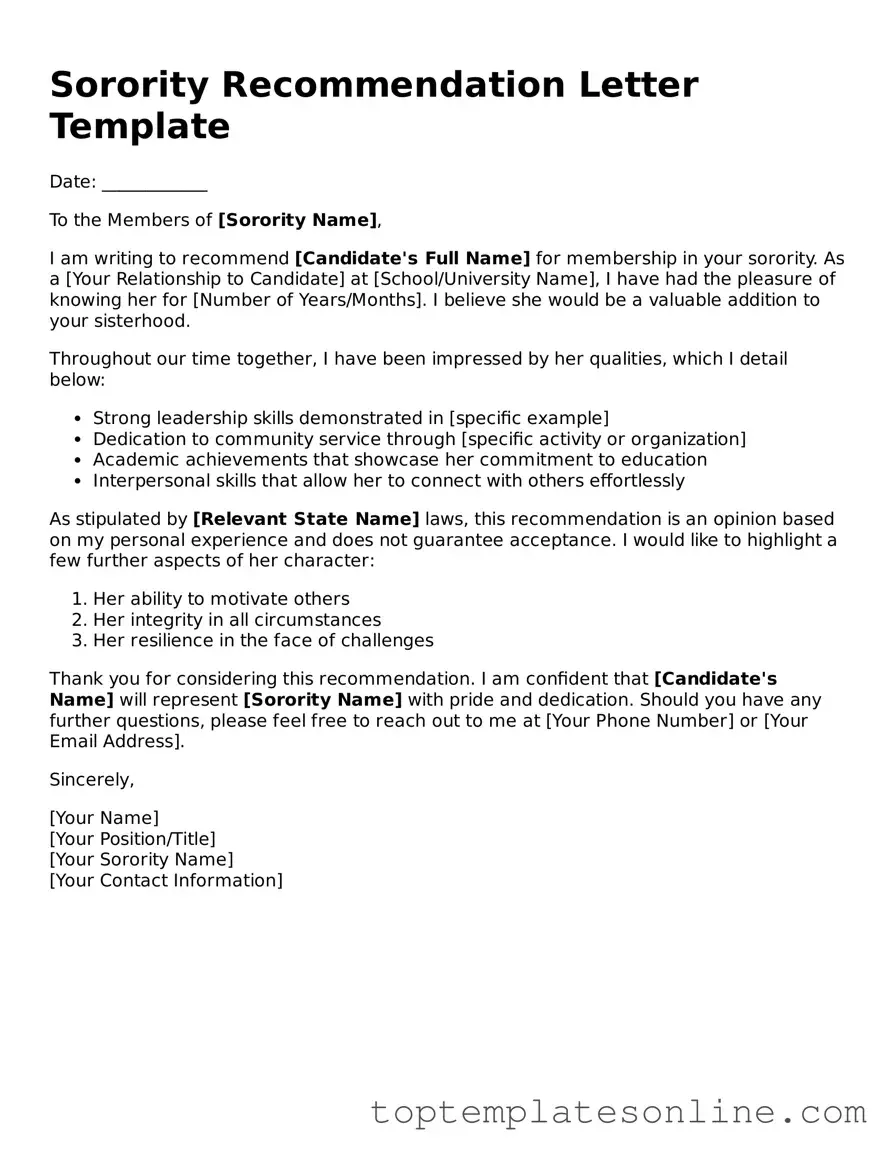Attorney-Approved Sorority Recommendation Letter Form
The Sorority Recommendation Letter form is a crucial document used during the sorority recruitment process, designed to provide insights about a potential new member. This form typically includes personal information, academic achievements, and character references, helping sororities assess candidates. Understanding its importance can enhance a candidate's chances of making a positive impression on sorority members.
Customize Sorority Recommendation Letter Here
